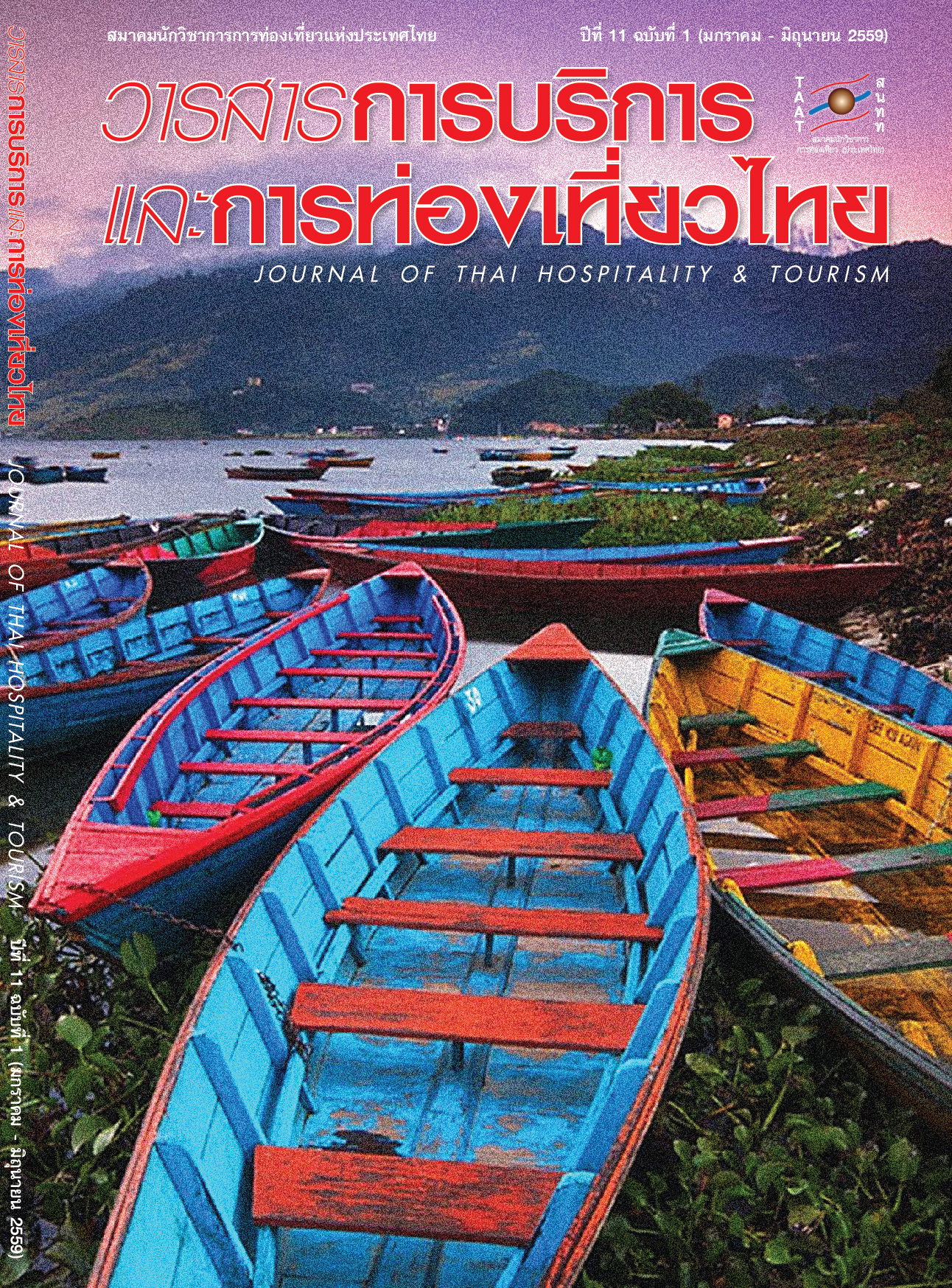Adaptive Using of Sin Sai Literature for Thai Tourism Interpretation
Main Article Content
Abstract
This research paper aims to study patterns of adaptive using of Sin Sai Literature for Thai tourism interpretation. The process of collecting data are following; First, reviewing the secondary information. Second, surveying the primary information from 5 selected communities in north-eastern part of Thailand. The communities are included; (1) Ban Sawethee Community, Amphoe Muang, Khon Kaen; (2) Ban Hua Nong community, Amphoe Banphai, Khon Kaen; (3) Ban Wang Koon community, Amphoe Nongsonghong, Khon Kaen; (4) Ban Dong Bung community, Amphoe Nadoon, Maha Sarakham; and (5) Ban Nongmuenthan, Amphoe Artsamart, Rot–Et. Third, in–depth interviewing of key performanta from the selected communities. The duration of collecting information from August 2014 to January 2015.
The research found similar patterns of adaptive use of Sin Sai Literature for Thai tourism interpretation, which are telling–story and mural painting. In most of the communities, except Ban Nongmuenthan Community, local scholars still present their local wisdom and knowledge through Sin Sai. In addition, local festivals and local dance performance (Mor Ram) were noticed in Ban Sawathee Community; while local puppet performance as Pramotai story were found in Ban Dong Bung Community.
Finally, the guidelines for adaptive using of Sin Sai Literature for Thai tourism interpretation are recommended.
Article Details
References
[2] Boonchayakorn, Provost. (2014, September 11). Abbot of Wat Chai Si Khon Kaen Province.
[3] Deesuankhok, Chob. (2009). Folk Literature of Sin Sai. (3rd Edition). Khon Kaen: Department of Education, Khon Kaen Municipality.
[4] Maza, Somsak. (2014, September 11). President of Local Volunteers to Maintain the Cultural Heritage.
[5] Pimpakun, Songwit. (2005). Local Student’s Education Through Art Production Site. Under Populist Phenomenon. Khon Kaen: Cultural Bureau Khon Kaen University.
[6] Pimpakun, Songwitand Xaysamouth Champaouthoum. (2014). Sinxay: Thai-Laos. Khon Kaen: Khon Kaen University.
[7] Saman Smatito Provost. (2014, September 12). Abbot of Wat Jakrawanphumpinij Roi Et Province.
[8] Suangkatin, Pongpichan. (2015). The Development of Tourism and Activities of Village Tourism Heaven Dragon Lijiang Suphanburi Province. Journal of Thai Hospitality and Tourism. 10(1), 59-70.
[9] Tavorn Potharuk Provost. (2014, September 13). Abbot of Wat Potharam. Maha Sarakham Province.
[10] Tourism Authority of Thailand (TAT) Khon Kaen Office. (2012). Another should - not - miss travelling route while visiting mid-Isan (Khon Kaen, Maha Sarakham, Roi Et, Kalasin). Bangkok: Tourism Authority of Thailand.
[11] Wiboon Sarakarn Provost. (2014, September 10). Abbot of Wat Sa Bua Kaeo. Khon Kaen Province.

